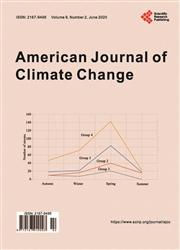Dagupan River Basin Exposure and Vulnerability Assessment of Buildings Extracted from LiDAR Derived Datasets
引用次数: 0
Abstract
The Philippines has a geographical and geological setting of a typhoon-prone country. Tropical cyclones have a high incidence of passing through the Philippine islands during the months of September to November with an average time overland at 11 hours north of 14.5° contrasted to 20 hours south of 14.5°. Due to the frequent occurrence of typhoons and tropical cyclones in this country, most of the provinces of the Philippines experience flood-related disasters that affect the people, their livelihood and many infrastructures. It is deemed necessary for the Philippines to come up with strategies to prevent further damage to its people and their properties. In this study, through the use of important parameters such as earth observations, Light Detection and Ranging (LiDAR) and Geographic Information System (GIS), assessment of buildings in Dagupan, the Philippines with the possibility of being affected by floods during different typhoon scenarios was done. GIS overlay analysis of the CLSU Phil-LiDAR 1 Project outputs, the 3D building GIS database, and flood hazard maps was done for the assessment. One (1) meter resolution LiDAR Digital Elevation Models (DEMs), geo-tagged video captured data and high-resolution images in Google Earth were used for processing and analysis to produce a 3D building GIS database. HEC HMS and HEC RAS were used to develop flood models that were used to produce flood hazard maps with different hazard levels. The results of this study were the series of flood exposure maps and vulnerability maps with statistics at different rainfall scenarios. Moreover, the buildings that will be affected by flood in the area were quantified and these were categorized according to their type. It was observed that as the rainfall return period increases, the number of buildings predicted to be exposed and vulnerable to flood also increases. The houses, business establishments, government offices, hospitals and other building types that are at risk of being affected by the flood were counted. Through analysis, it was predicted that there is a higher risk of building exposure and vulnerability during the 100-year rainfall return period. Out of the 71,884 buildings extracted from the area, a predicted 69,214 buildings will be exposed to flood during the 100-year rainfall return period, 59,137 buildings, 9253 buildings, 824 buildings at low, medium and high flood hazard level, respectively. Moreover, a total of 9297 buildings are foreseen to be vulnerable to flood, 4614 buildings, 4368 buildings, 315 buildings at low, medium and high flood hazard levels, respectively. The maps produced through the study are a valuable asset for the development and preparedness of the community in the Dagupan floodplain. Warnings and other information on evacuation measures will be easier to disseminate through the use of the produced maps in this study.基于激光雷达数据的大古盘河流域建筑物暴露与脆弱性评估
菲律宾在地理和地质上都是台风多发国家。热带气旋在9月至11月期间通过菲律宾群岛的几率很高,陆地平均时间为14.5°以北11小时,而14.5°以南20小时。由于该国台风和热带气旋频繁发生,菲律宾大多数省份都经历了与洪水有关的灾害,这些灾害影响到人民、他们的生计和许多基础设施。菲律宾认为有必要制定战略,防止对其人民及其财产造成进一步损害。在本研究中,通过使用地球观测、光探测和测距(LiDAR)和地理信息系统(GIS)等重要参数,对菲律宾达古潘的建筑物在不同台风情景下受洪水影响的可能性进行了评估。对CLSU Phil LiDAR 1项目的输出、3D建筑GIS数据库和洪水危险地图进行了GIS叠加分析,以进行评估。一(1)米分辨率的激光雷达数字高程模型(DEM)、地理标记的视频捕获数据和谷歌地球中的高分辨率图像用于处理和分析,以生成3D建筑GIS数据库。HEC HMS和HEC RAS用于开发洪水模型,用于生成具有不同危险级别的洪水危险图。这项研究的结果是一系列洪水暴露图和脆弱性图,并在不同的降雨情景下进行了统计。此外,对该地区将受到洪水影响的建筑物进行了量化,并根据其类型进行了分类。据观察,随着降雨重现期的增加,预计暴露在外和易受洪水影响的建筑物数量也在增加。对有可能受到洪水影响的房屋、商业机构、政府办公室、医院和其他建筑类型进行了统计。通过分析,预测在百年一遇降雨期间,建筑物暴露和脆弱性的风险更高。在从该地区提取的71884栋建筑中,预计在百年一遇降雨期间,69214栋建筑将面临洪水,59137栋建筑、9253栋建筑、824栋建筑分别处于低、中、高洪水危险等级。此外,预计共有9297栋建筑易受洪水影响,4614栋建筑、4368栋建筑和315栋建筑分别处于低、中、高洪水危险等级。通过研究绘制的地图是达古潘河漫滩社区发展和准备的宝贵资产。通过使用本研究中制作的地图,有关疏散措施的警告和其他信息将更容易传播。
本文章由计算机程序翻译,如有差异,请以英文原文为准。
求助全文
约1分钟内获得全文
求助全文

 求助内容:
求助内容: 应助结果提醒方式:
应助结果提醒方式:


